There are thousands of licensed plumbers throughout New York City, but there are only a select group that have the proper license and DOT bond to work under the city sidewalks and streets. Most homeowners assume that “a plumber is a plumber” and “a leaking pipe, is a leaking pipe”. Naturally you would call a plumber from a referral, or research the internet for what looks like a trusted plumber.
If you have a sub-surface sewer problem you are specifically looking for a sub-surface water main and sewer contractor who is capable of excavating under the city streets or sidewalk.
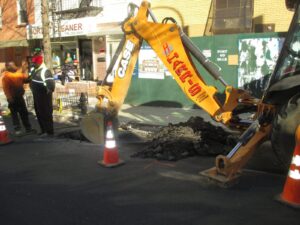
Street excavation begins |
Once the location of the break has been determined, the licensed plumber will obtain all required DEP and DOT permits in preparation of the sewer repair work. Most excavation for a job like this will require a backhoe and usually requires an excavation of up to 14’ in depth.
It is important to remember that an excavation of this depth will also require proper shoring per OSHA regulations.
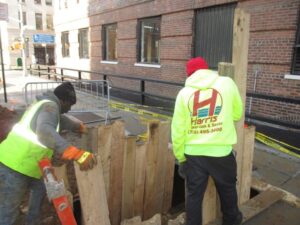
Shoring boards are in |
Once the excavation and shoring are completed, the field workers can complete the sewer repair work
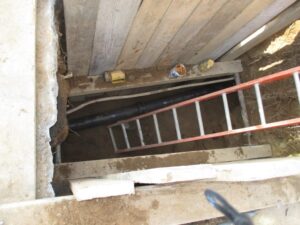
New cast iron sewer pipe is in |
If you have a sub-surface water main problem, the process is similar to a sewer repair but will usually not require an excavation as deep as a sewer. The average depth for a water main excavation is 4’ however, there are rare cases that may require an excavation of over 10’.
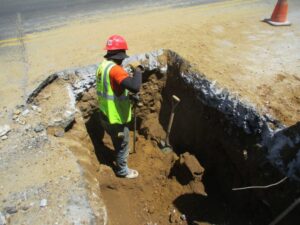
Digging for a water line |
A water main repair usually requires less trenching than a sewer repair and will require tunnels to be made below ground. Once the tunnels are completed, the copper pipe is pulled from one hole, to the next.
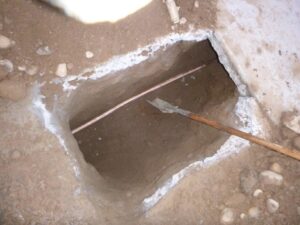
New copper water main |
When working on a sewer or water main job the licensed plumber is always required to restore the roadway per DOT code, which is a part of the reason that the plumber must hold a bond with The Department of Transportation.
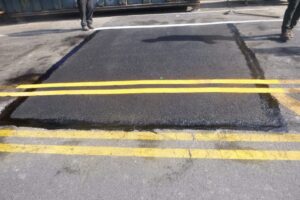
Final restoration of roadway |





















